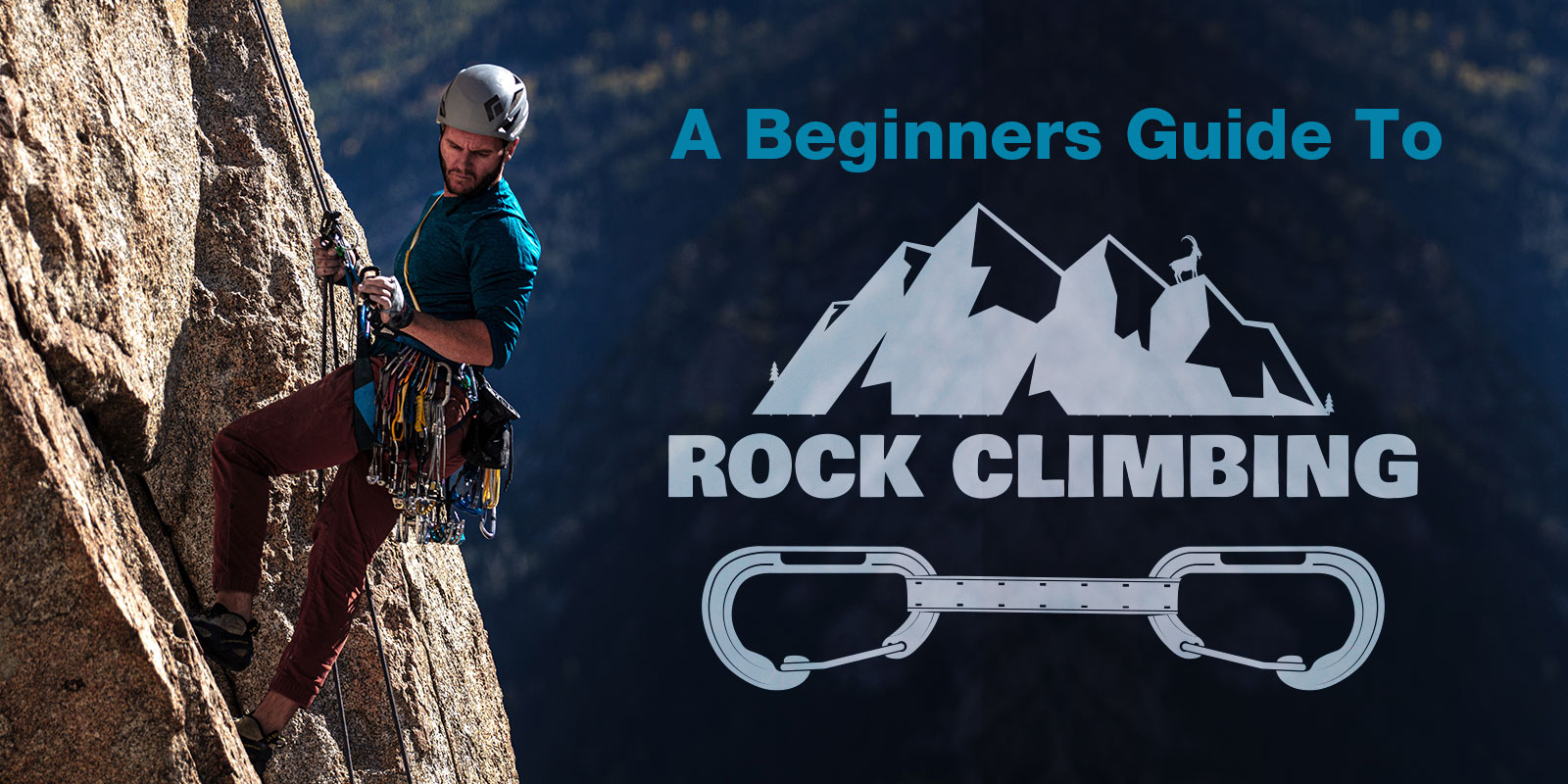Did you know you can burn anywhere from 500 to 900 calories an hour rock climbing? It doesn’t stop there -in fact, rock climbers tend to have enhanced coordination, impressive endurance, and insane flexibility. It is a sport that challenges your mind, body, soul, and of course, fingertips. We thought it would make sense to create a basic beginner’s guide to rock climbing to help those interested in the sport get started.
What’s In This Rock Climbing Guide:
- Rock Climbing Basics
- Rock Climbing For Beginners
- Required Rock Climbing Gear
- What Is Belaying In Rock Climbing?
- Grading Your Climbs
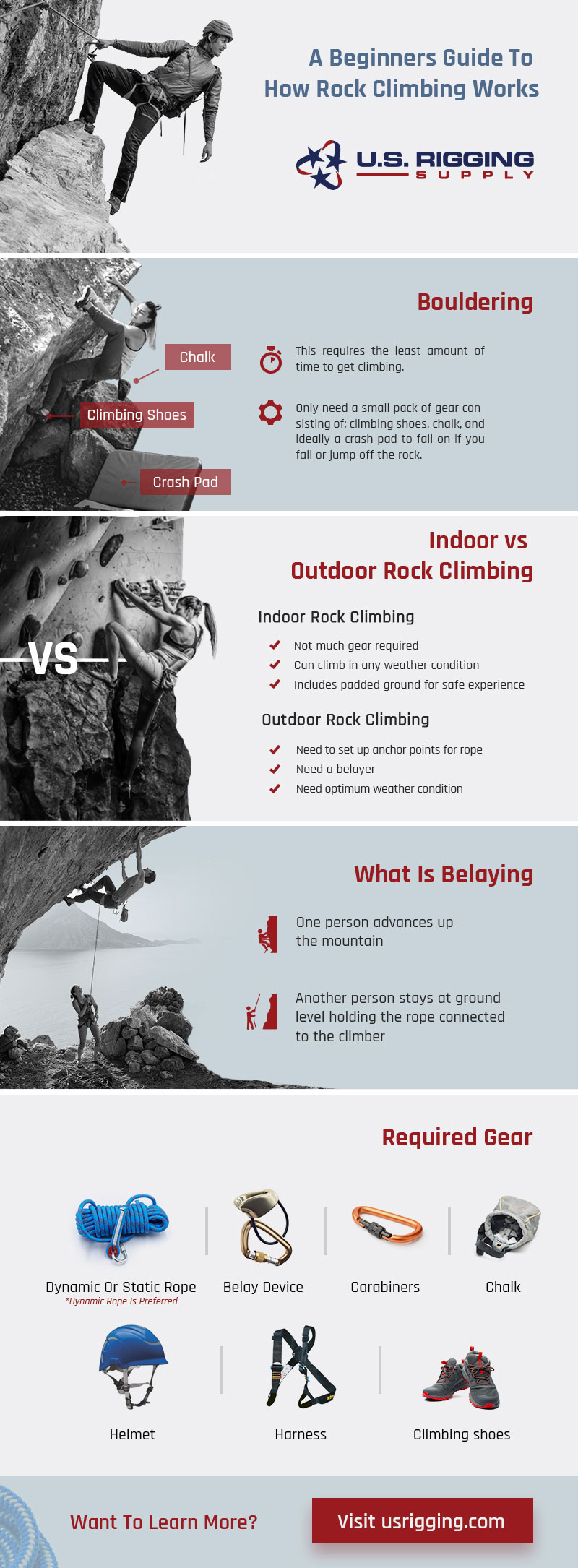
1. Rock Climbing Basics You Should Know
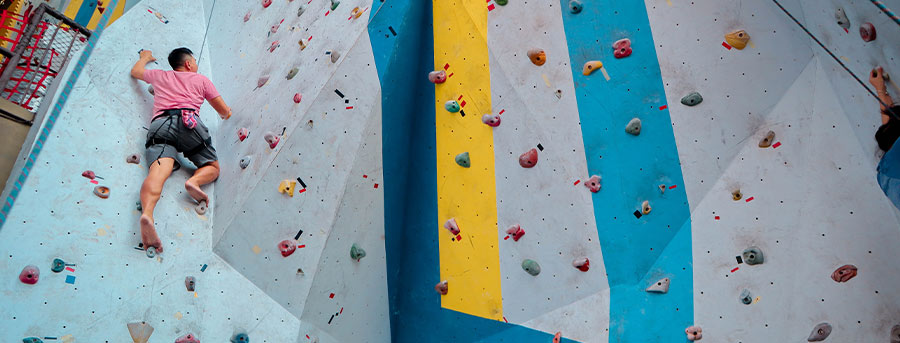
Like anything in life, preparation is key to success. Rock climbing is no different. Before you decide to climb Mount Everest, there are few key steps to making your adventure the best possible experience.
A. Take A Rock Climbing Class - Indoors
Before you grip your way up any type of slab of rock, it might be worth looking into hiring a certified instructor to learn the basics. Many climbers find themselves going with friends or using a Groupon to try indoor rock climbing. When starting out, having a resource for questions is helpful. If hiring an instructor as a resource isn’t in your budget- don’t stress - go to an indoor rock climbing gym. Typically, you can ask fellow climbers for some pointers and tips. Generally, climbers are more than happy to help.
B. How To Choose The Type Of Climbing You Want To Do
Not every type of rock climbing experience is the same. A great example, going indoor rock climbing for one hour versus an eight-hour climb outside requires 100% different preparation, mindset, and gear. The main types of climbing you’ll come across when starting out are: Bouldering, Indoor climbing, and Outdoor Climbing.
2. Rock Climbing For Beginners - Picking Your Route
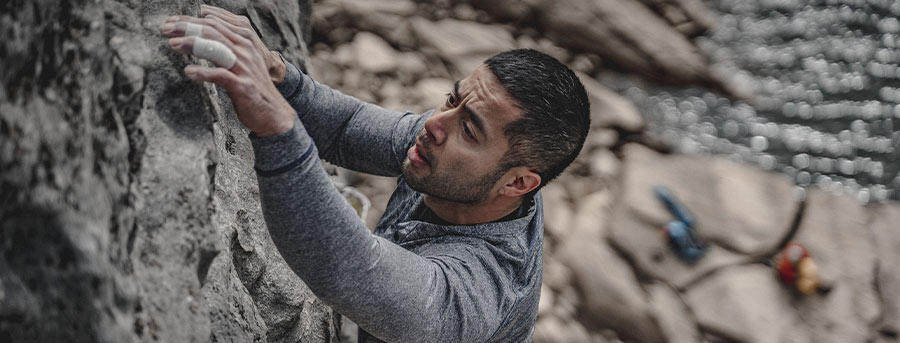
A. What You Should Know About Bouldering?
The most appealing part of bouldering is that it requires the least amount of time and gear. The added safety bonus - most boulders only go as high as you can jump off without hurting yourself. Of course, there are exceptions and advanced routes that get fairly high. However, in most cases, climbers know that boulders aren’t that elevated. Introductory wise, it’s a great start because it only requires climbers to have a small pack of gear consisting of: climbing shoes, chalk, and ideally a crash pad (if you fall or jump off the rock).If you go this route you’ll find a lot of opportunities to improve strength, while being able to move horizontally along the rock and parallel to the ground.
B. What Should You Know About Indoor Rock Climbing?
This is probably the most accessible to beginners. Usually you can find an indoor rock climbing venue at colleges, recreation centers, even gyms that do not have freestanding walls, can be used to practice bouldering and outdoor climbing. Indoor climbing generally uses artificial hand and footholds placed around the walls creating different routes for the climbers. Normally the routes are colored-coded to signify the level of difficulty. If you are a beginner, Indoor rock climbing is a great place to start, as opposed to outdoor climbing, as it may require more gear and weather conditions may pose a challenge.
C. What Should You Know About Outdoor Top-Rope Climbing?
There are two things to know about outside rock climbing. First, you will need gear and the knowledge to properly set up anchor points for your rope. Having the proper setup can save your life and / or prevent injuries. Secondly, you’ll need a belayer. Basically, the belayer is the person who pulls in the slack as you advance in your climb. This person will be the one who catches you, should you fall. Before you can climb with teams or even go on advance climbs, you will need to know how to belay.
3. Required Rock Climbing Gear Package
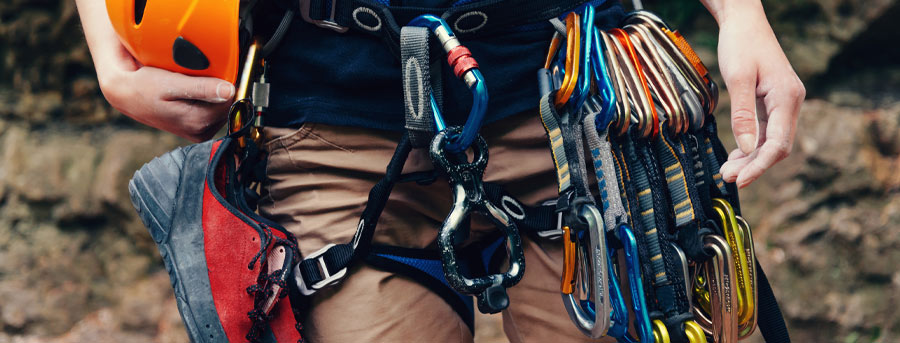
A. Get The Best Rope
No gear is more important to a climber than rope. It is literally your lifeline. As you advance as a rock climber you will have different preferences on what type of rope you prefer. When starting out you should know two rope differences. I. Dynamic Rope Dynamic rope has elasticity. It is designed to absorb the energy of falls. II. Static Rope Static rope is used for rescues and rappelling. It is stiff and the opposite of dynamic rope.
B. Basic Rock Climbing Gear Kit
When climbing you’ll need the following items:
- Belay Device
- Carabiners
- Chalk
- Climbing Helmet
- Climbing Harness
- Rock Climbing Shoes
What does a belay device do?
This is used to control the rope. When used correctly, it decreases the friction and helps the belayer catch a fall and/or lower a climber.
What are carabiners used for?
These are strong metal rings that connect the climbing rope to pieces of climbing protection such as bolts. For beginners, you’ll most likely use a locking carabiner designed to be used with a belay device.
What is chalk used for?
Grip is everything when climbing. Just like a gymnast, climbers rely on chalk to absorb perspiration on their hands.
What are climbing helmets used for?
You should always use a helmet, specifically made for climbing when climbing outdoors. A helmet is a must. Safety first guys. Climbing helmets are designed to protect your head from falling rocks and debris. Some climbing helmets can provide protection if you fall.
What are climbing harnesses used for?
A harness is a must unless you are bouldering. It has two parts: the waist belt and leg loops. Once hooked up, the harness allows you to tie into the rope securely.
What are rock climbing shoes used for?
Rock climbing shoes aren’t comfortable for walking long distances. They are used to provide friction and support your grip when climbing. A general rule of thumb - they should be snug but not painful or too tight.
4. What Is Belaying In Rock Climbing?
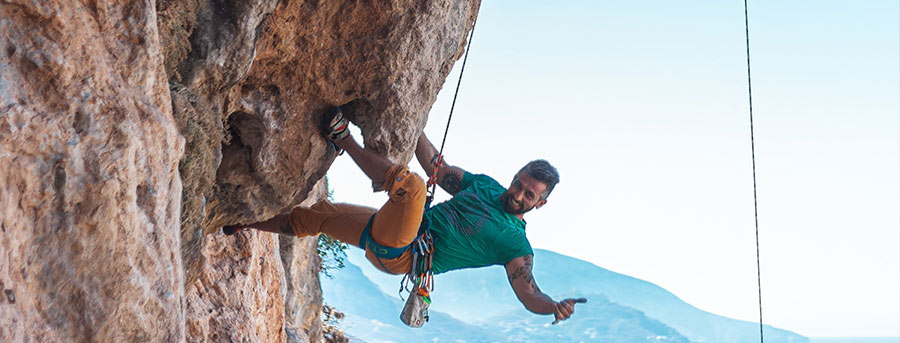
When you think of rock climbing, no doubt you picture the climber advancing up a mountain and a person at the very bottom/ground level. This person is holding the rope connected to the climber and is called the belayer. When someone is talking about belaying, they are referring to the technique used to exert tension on the climbing rope to protect climbers should they fall, as well create slack for them to advance. This role is generally given to the more experienced climber. Another way to think of the belayer is to think of them as an anchor point during these climbs.
5. Grading Your Climb
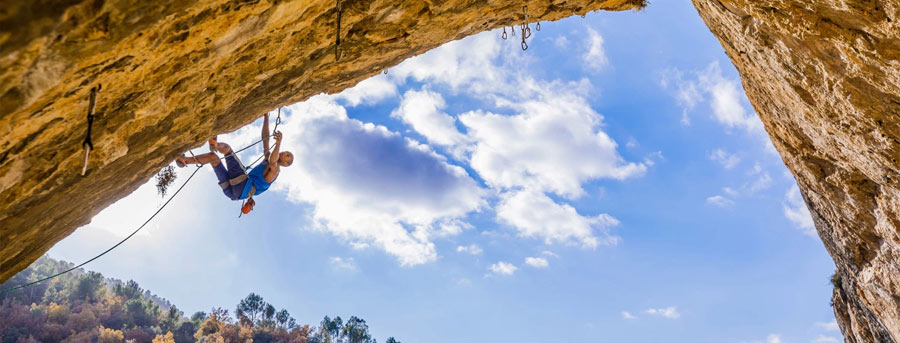
The final thing we wanted to share are the five main types of rock climbing grades you should know.
- The V Scale aka The Hueco Scale: This is the most used system in North America
- The B System: This is used in North America and has only three grades: B1, B2, and B3 - B3 is the hardest.
- The Fontainebleau System: This is the most widely used system in Europe.
- The Dankyu System: This is used in Japan. The easiest Kyu grade is 7, the hardest is 1.
- The UK Technical Grading System: This is only used in the UK for trad climbers.



